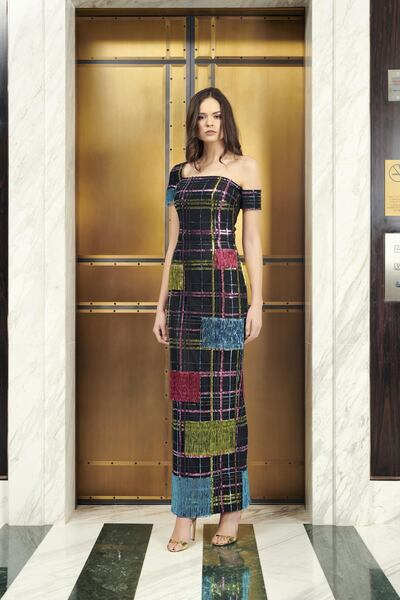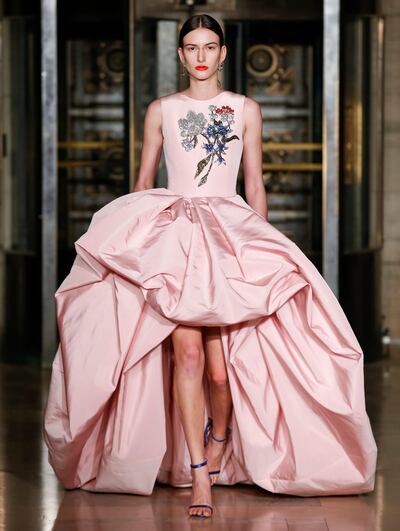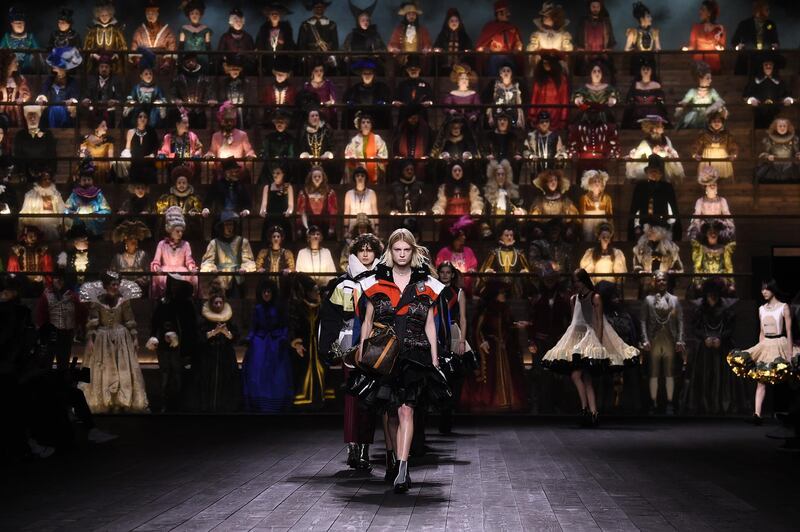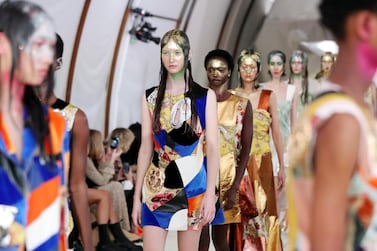One of the strangest fashion months has drawn to a close. Covid-19 wreaked havoc on schedules in Milan and Paris. Asian media and buyers were already absent for the season, and many Americans left Paris early to start their 14-day self-quarantine after the outbreak in Milan. Now news has emerged of the cancellation of the cruise shows in May, including Giorgio Armani's trip to Dubai for his hotel opening and fashion event.
This season has disrupted the way fashion does its business, and low turnouts in New York and London illustrated how those fashion weeks are struggling to maintain their position in the four-week calendar. Paris is the city where the real business of fashion is done. Although designers present their collections on the US and UK runways, many open showrooms during Paris Fashion Week to capture business from the Asians, Arabs and Americans who send their buying directors to all four cities.
'Paris is perfect'
“We have tried Milan and New York, but the biggest pool of buyers come to Paris, and it is more suited to our customers,” says designer Rami Al Ali, who has taken a showroom in Paris for the past five years for his evening wear. Each fashion week has its DNA, he declares, “New York is about the front row, Milan is more commercial, London has its ups and downs, while Paris is perfect”.

The French capital has long been a honeypot for designers: the Japanese, including Issey Miyake and Comme des Garcons's Rei Kawakubo, arrived in the 1980s as there was no equivalent platform in Asia; the Belgians came later that decade; and British labels such as McQueen, Westwood and McCartney arrived in the early 2000s. Chinese designer Uma Wang showed her romantic silhouettes in Milan for many seasons, but moved to Paris about three years ago. "I love my Italian customers and showing there," says Wang, who produces some of her collection in Italy, "but 70 per cent of my business is international, and I have a lot of retailers in the US, who only come to Paris to buy."
The British Fashion Council established the London Showrooms in Paris in 2008, attracting more than 500 buyers each season, looking for fresh new talent, such as Nabil Nayal and Supriya Lele. "We started the Showrooms because of the financial recession, as not all the buyers and media were getting to London," says BFC's strategic consultant Anna Orsini. Mary Katrantzou, Erdem and Marc Quinn are among the designers who started under this umbrella before moving on to set up their own Paris salerooms. "Also, we've found buyers like to see what is happening in Milan and Paris, and confirm trends before allocating their budgets," adds Orsini.
Danish designer Cecilie Bahnsen believes Copenhagen Fashion Week gives store buyers an early advantage to understand the season’s inspiration “and work on key looks and merchandising ahead of time”. Copenhagen’s showcase was held in January and the city an important part of Bahnsen’s collection. However, she says: “When it comes to sales, we know there are many more buyers in Paris, and after seeing all the fashion weeks, [they] have a better understanding of what they want.”
Too many shows, too little time
It is not just the catwalk collections (scheduled each March and October in Paris); there are also pre-collections held around the same time as the menswear shows in January and June – another event on a buyer's already crowded calendar. New Yorker Tommy Ton showed his Deveaux menswear and women's pre-collection in Paris in January, and so took a step back from New York in February. "I like the romance of shows, but you can't always stage one," admits Ton, whose collection has the cool minimalism of The Row but at friendly luxury prices. "I miss those days when trends could simmer, now everything is so instant, but I don't think doing four weeks of shows can be sustainable." Paris gives him the opportunity to see his European customers and, in normal circumstances, the American stores. However, they cancelled and are now rescheduling in New York, "which has stretched the season further".
Alice Temperley, who recently just opened a new Temperley London store in The Dubai Mall, doesn’t think all the travel is sustainable. “Paris has the magic, and you can guarantee getting everybody there, but isn’t presenting four collections [including cruise and pre-fall] needing a rethink?”
Fashion roots
Oscar de la Renta sees 60 per cent of its wholesale accounts in Paris – buyers from Europe, the Middle East and Asia – and, as CEO Alex Bolen says, “it’s critical for Oscar to have the visibility”. However, the team don’t have plans to show the collection anywhere but New York.

“The design and development teams as well as our ateliers are all in New York. These are critical to our seasonal presentations and it would be difficult, costly and disruptive to move our operation to Paris for a fashion show. While we cannot speak for the industry, we are a proud New York-based company and plan to show our collections first where we live and work,” says Bolen.
Fashion forward
The industry, however, may start looking at other business models. The world got a taste of what an entirely virtual fashion week might look like through a digital buying tool called Joor and virtual showrooms. But whether VR could replace the experience a buyer has of touching the clothes, seeing them on models and engaging with the brand's vision remains to be seen, as does the willingness of media and buyers to spend longer in Paris to see more designers migrate to the city from other fashion capitals.






